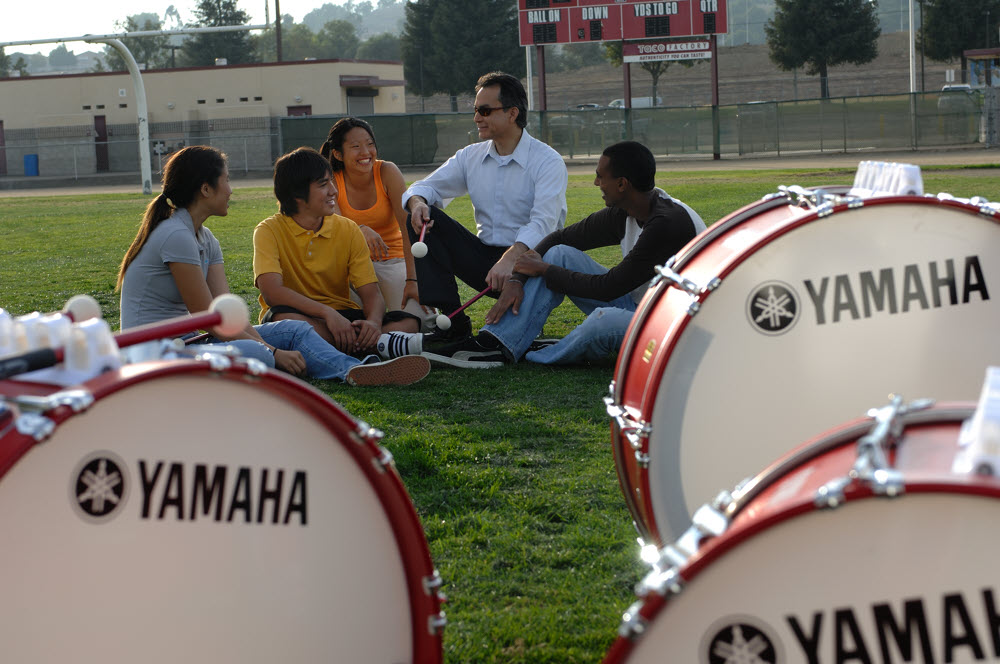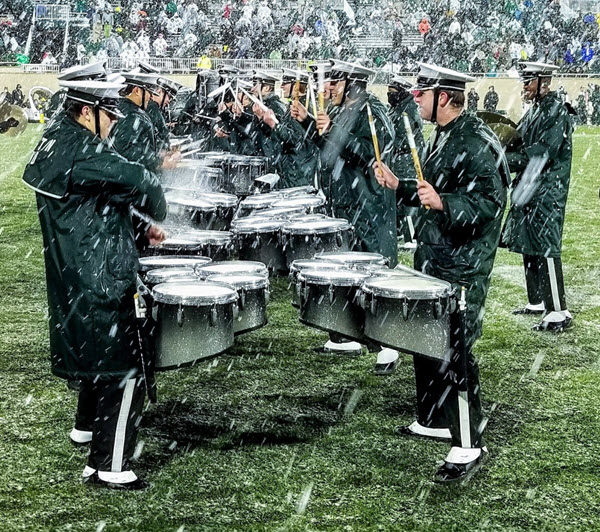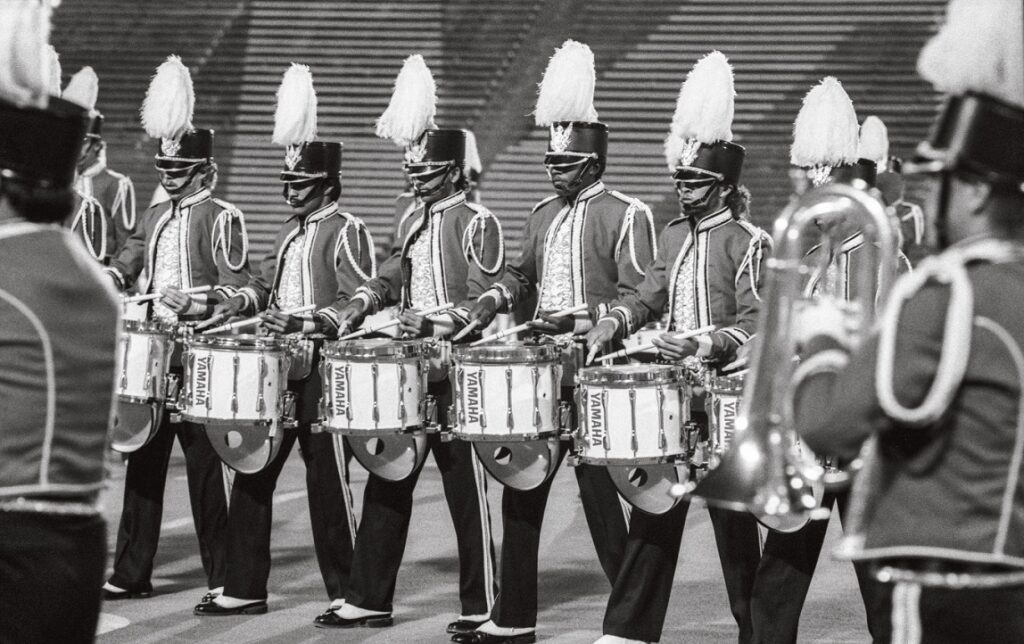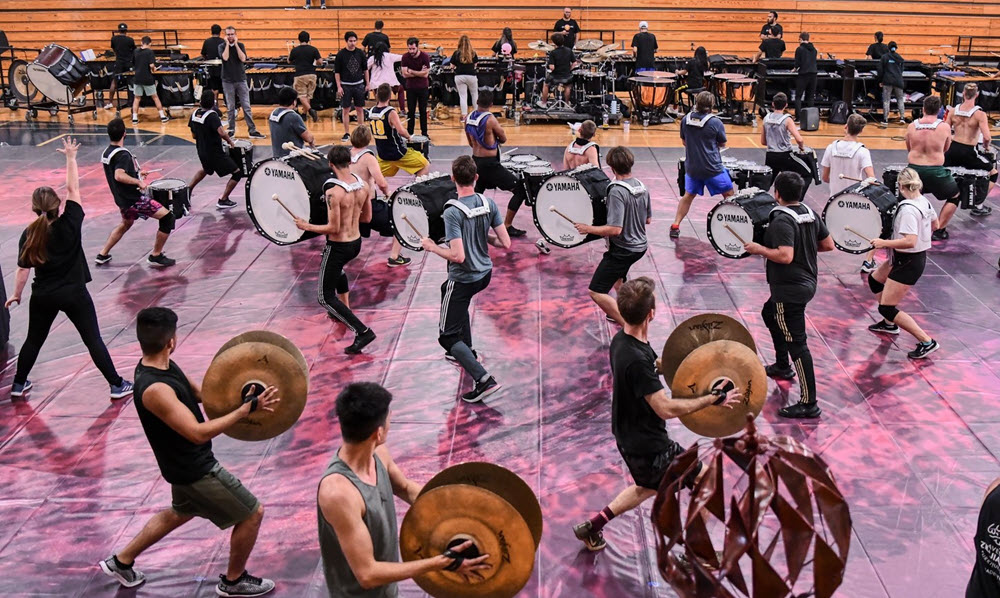Anatomy of A Marching Snare Drum
What are the components that go into a marching snare drum?
Marching snare drums are designed for precise articulation, powerful projection and durable performance.
Here’s an annotated illustration of a typical marching snare drum, followed by a description of the main components, in alphabetical order:
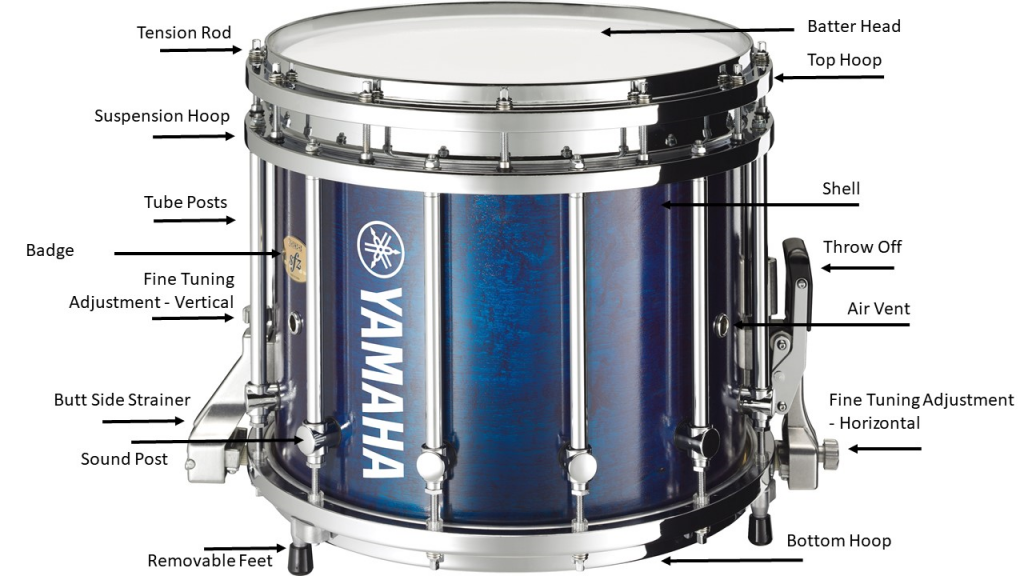
Air Vents. These allow air to escape from inside of the drum. Without them, the drum would sound muffled.
Badge. This is where you find the serial number and model number of the drum.
Batter Head. The top head of the drum that is played with drumsticks. For maximum volume and stick articulation, this is often made of Kevlar material and tuned to a high tension.
Bottom Hoop. The very bottom rim of the drum, normally made of aluminum alloy. This is used to tune the snare head.
Butt Side Strainer. This is where the snares attach to the drum, opposite the release strainer.
Fine Tuning Adjustments. These allow the snare strainer to be adjusted vertically and horizontally.
Removable Feet. These provide protection when the drum is placed on the ground.
Shell. Typically made from wood, the shell is the “body” of a marching snare drum. It projects the sound, and a consistent, handcrafted shell makes tuning easy. A 45-degree bearing edge is often utilized on the bottom side to ensure proper snare articulation.
Snare Head. The drum head on the bottom of the drum. This interacts with the snares to create a buzzy sound.
Snare Strainer. The system that holds all the snare strands in place. Fine tuning adjustments may be made to either tighten or loosen the snares.
Snares. Synthetic strands or “guts” that give a snare drum its characteristic buzzy sound.
Sound Posts. These attach the tube posts to the shell, helping to eliminate unwanted overtones.
Sound Tube. Connects the top and bottom hoops to the drum.
Suspension Hoop. Usually made of aluminum alloy, this takes the tension of the batter head and protects the wood shell from breaking under extreme pressure.
Tension Rods. Steel rods that allow the top and bottom drum heads to be tuned.
Throw Off. This allows the player to turn the buzzy sound on and off by engaging or disengaging the snares.
Top Hoop. The very top of the drum, normally made of aluminum alloy. This is used to tune the batter head.
Tube Posts. These help to reduce overtones from the vibrating drum shell.
Click here for more information about Yamaha marching drums.










